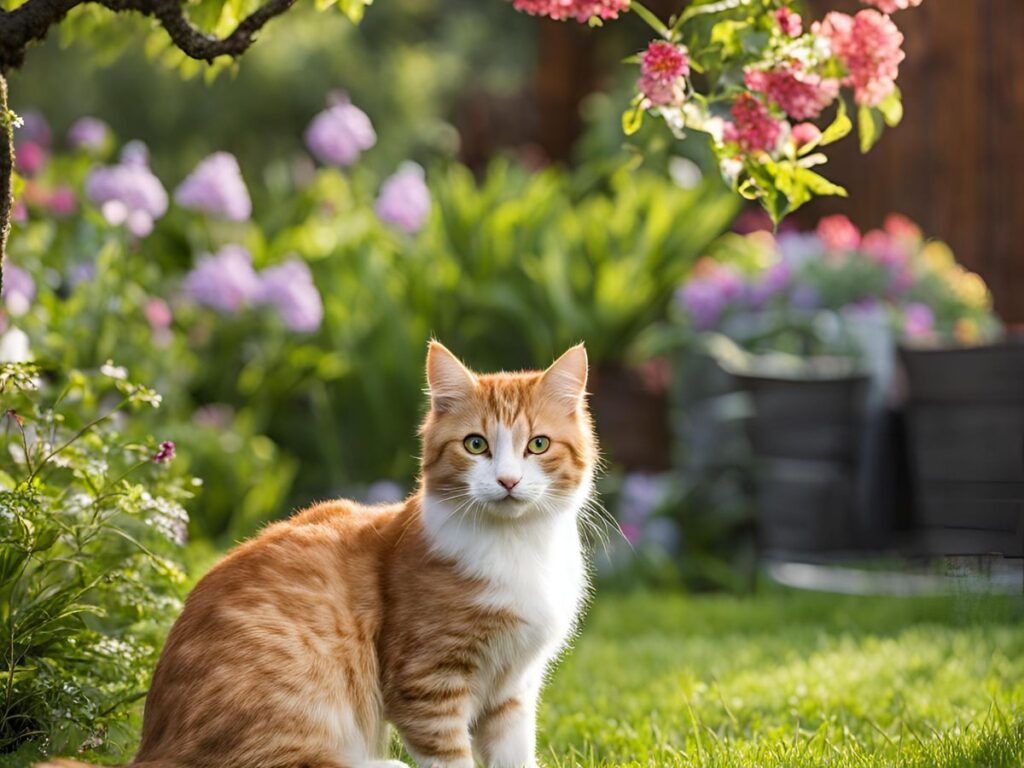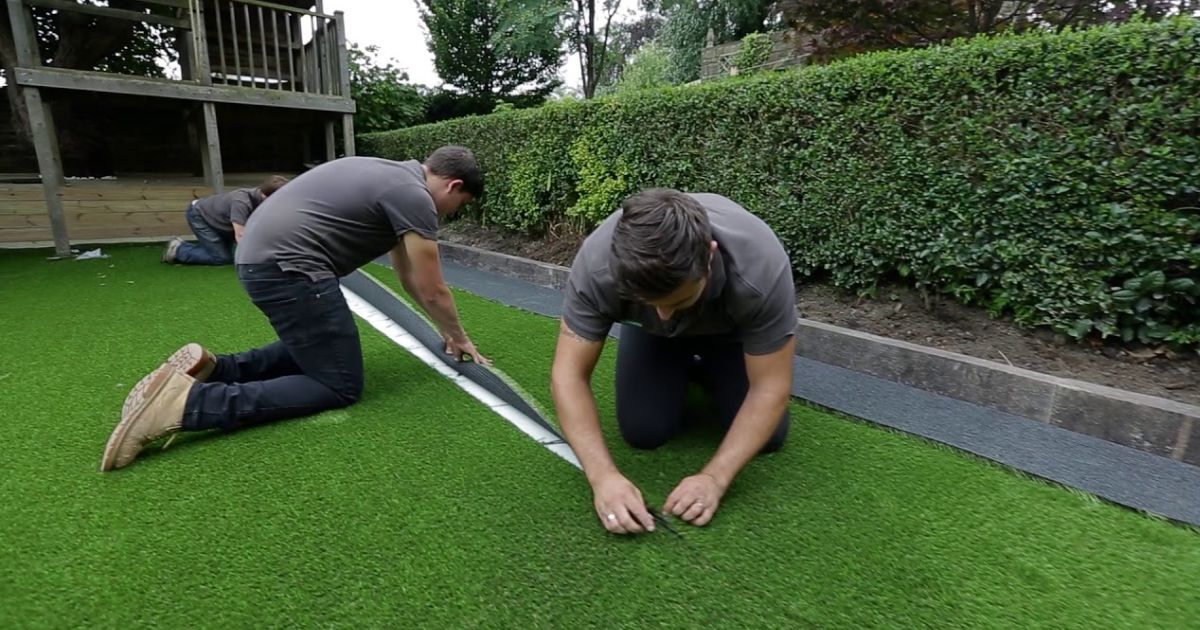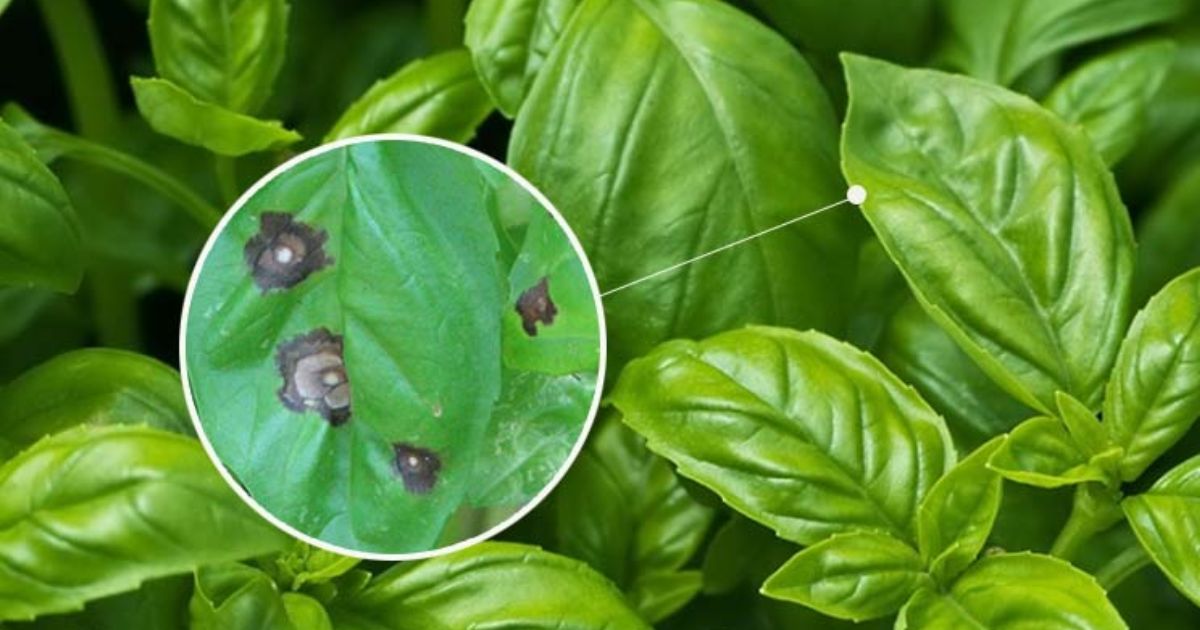If you’re a garden enthusiast, nothing can be more frustrating than finding your carefully nurtured plants disturbed by curious cats. Whether digging, scratching, or using your garden as a litter box, these feline antics can quickly turn your peaceful outdoor space into a chaotic playground. Cats are naturally drawn to gardens for their soft soil, hiding spots, and plant scents, making it a prime territory for their exploration. However, just because they love your garden doesn’t mean they must ruin it.
This article will show you how to stop cats from turning your garden into their playground. From practical solutions like cat repellents and physical barriers to creative behavioral deterrents, we’ve covered you with practical strategies to keep your garden safe and intact. Whether you want to protect your flowers and vegetables or maintain a clean space, these tips will help you reclaim your garden and prevent cats from making it their personal hangout spot.
Understanding Why Cats Love Your Garden
Cats are naturally curious creatures and gardens offer an environment that appeals to many of their instincts. One of the main causes of cats’ attraction to gardens is the soft, loose soil, which is perfect for digging. Cats, particularly outdoor ones, have an innate urge to dig, and your garden’s rich, loose earth allows them to indulge in this behavior. Whether they’re burying their “treasures” or simply exploring, the soil in your garden serves as a natural playground for their paws.
In addition to the soil, the scent of plants in the garden can be a strong attraction for cats. Plants release aromatic compounds that pique a cat’s interest, and some even have qualities that appeal to them, such as catnip, which is known to cause a euphoric reaction in many felines. Gardens with various plants, especially those with strong scents or small, leafy areas, can be a magnet for cats, enticing them to return for more exploration.
Cats also have an instinct to scratch and mark their territory. Your garden, with its trees, fences, or garden structures, offers perfect surfaces for them to scratch and leave their scent behind. This behavior is integral to how cats establish territory and communicate with other animals. How to keep cats out the garden Whether they are sharpening their claws on tree trunks or the edges of garden beds, scratching in the garden gives them a sense of ownership over the space.
Moreover, gardens provide secluded spaces that are safe for cats to explore. These areas often offer shelter, shade, and hiding spots, which makes them feel secure and hidden from potential threats. Whether it’s a dense cluster of plants or a shady corner of your garden, these spots allow cats to observe their surroundings, hunt (even if it’s just pretending), or take a nap away from the hustle and bustle of daily life.
Understanding these natural attractions is the first step in preventing cats from turning your garden into their personal playground. By recognizing what draws them to your space, you can take steps to make it less inviting and protect your plants from feline damage.
Practical Solutions to Keep Cats Out of Your Garden
When it comes to protecting your garden from curious cats, you can implement several effective and practical solutions. Whether you prefer using repellents, creating physical barriers, or simply making your garden less attractive to cats, what keeps cats away from flower beds these strategies will help you maintain a peaceful and intact garden.
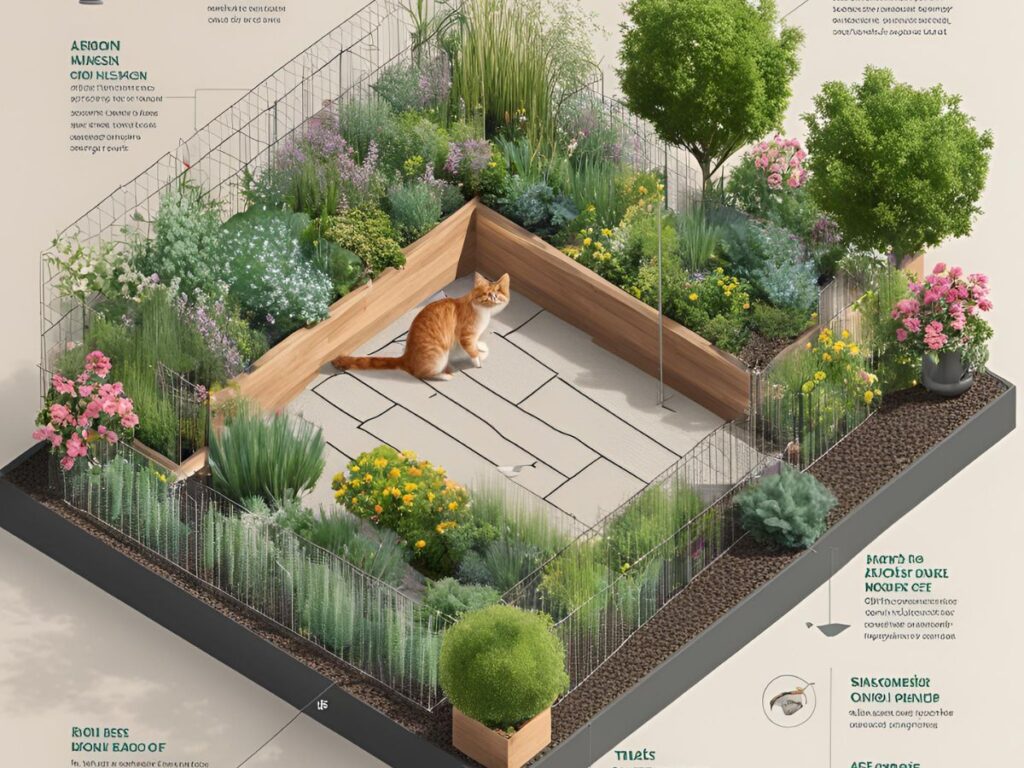
1. Use Cat Repellents
Cat repellents are one of the most straightforward ways to deter cats from invading your garden. These products work by emitting unpleasant odors or sounds to cats, driving them away without causing harm.
- Types: Various types of cat repellents are available. Sprays are widely used and can be sprayed on plants directly, garden borders, or even pathways. Granules can be sprinkled around garden areas, offering long-lasting protection. Ultrasonic devices emit a high-frequency sound only audible to cats, scaring them away whenever they enter your garden.
- Natural vs. Chemical: Natural repellents can be just as effective if you prefer eco-friendly solutions. For instance, citrus peels (such as orange, lemon, or lime) are a great natural deterrent, as cats dislike the strong scent. Lavender and peppermint oil also repel cats, as they find the fragrance overpowering. Commercial chemical repellents may be used for a more potent approach, but always opt for those that are safe for pets and the environment.
- Where to Apply: The key to effectiveness is placing repellents where cats are most likely to enter. For sprays, target areas like garden borders, plant bases, or even along pathways where cats tend to roam. Granules may be dispersed over the exterior of your garden or directly on soil. Ultrasonic devices are best positioned where cats typically approach—near fences, garden gates, or hidden corners of your garden.
2. Create Physical Barriers
Sometimes, the best way to how do you keep cats out of your flower beds out is to physically block their access to your garden. A few well-placed barriers can make your garden less inviting to feline visitors.
- Fencing: Low fences, chicken wire, or mesh barriers can be effective deterrents. While cats are excellent climbers, a well-placed wall at least 3 feet tall can help prevent them from jumping into your garden. Bury the bottom of the container for added security wall a few inches into the ground to stop cats from digging underneath.
- Garden Borders: Adding thorny plants or decorative rocks around the perimeter of your garden can make it more difficult for cats to enter. Plants like rose bushes or holly are beautiful and deter cats from venturing too close with their sharp thorns. Keep cats away from flower beds A barrier of sharp, jagged rocks around garden beds can also create an uncomfortable surface for cats to walk on.
- Row Covers and Netting: For plants that need extra protection, consider using row covers or mesh netting. These can be draped over crops or flowers to prevent cats from reaching them. This approach is efficient for vegetable gardens, where cats may dig or scratch the soil. The mesh also keeps other animals, like rabbits or birds, from entering. how to store bare root strawberries
3. Make the Garden Less Attractive to Cats
If cats are still regularly visiting your garden, it might be time to change what attracts them. How to keep cats out of garden By removing their food sources and adding plants they dislike, you can make your garden a less appealing destination.
- Remove Food Sources: Cats are often attracted to gardens because of easily accessible food. Bird seed, fallen fruit, or food scraps can draw them in. Remove trash, store food in sealed containers, and regularly clean up fallen fruits or vegetables. This will reduce the likelihood of attracting cats to your garden in the first place.
- Clean Up After Yourself: Cats love to dig in soft soil, especially when it’s nutrient-rich. If you’ve recently added compost or garden fertilizer, ensure that any exposed soil is covered with mulch or stone. Keep your garden beds tidy and free from debris that might entice them to explore further.
- Plant Cat-Repellent Plants: Certain plants naturally repel cats, making them a great addition to your garden. Rue, lavender, pennyroyal, and lemongrass are all known for their strong scents that cats find unpleasant. Adding these plants around the perimeter of your garden or within flower beds can serve as a natural deterrent, reducing the likelihood of cats lingering around.
By combining these practical solutions, you can make your garden less appealing to cats while preserving its beauty. Whether through repellents, physical barriers, or simply making the environment less inviting, these strategies will help you reclaim your garden and keep those pesky cats at bay.
Behavioral Deterrents
In addition to physical barriers and repellents, behavioral deterrents can work wonders to how to keep cats away from flower beds from your garden. These methods exploit cats’ natural behaviors, such as their sensitivity to sudden movements, loud sounds, and vibrations. Incorporating these strategies can discourage cats from entering your garden without causing harm.
1. Motion-Activated Sprinklers
One of the most efficient and considerate methods to keep cats off garden beds out of your garden is to use motion-activated sprinklers. When a cat comes within range of the sensor, these gadgets are made to detect movement and release a brief burst of water. The sudden splash of water startles cats and sends them running, teaching them to associate your garden with an unpleasant experience.
- How They Work: Motion-activated sprinklers are equipped with infrared sensors that detect movement. Once a cat enters the designated area, the sensor triggers the sprinkler to release a short but powerful burst of water. This unexpected water spray is startling but harmless to cats, and the loud sound of the sprinkler also adds to the deterrent effect. Most cats, disliking being wet and surprised, will quickly learn to avoid areas with these sprinklers.
- Installation Tips: To ensure the sprinkler system provides optimal coverage, place the device at the entry points where cats tend to sneak into your garden, such as near fences, gates, or garden paths. Ideally, the sprinkler should be set up in an area well-covered by its spray radius but not obstructed by plants or other objects. Consider positioning it in a spot where cats frequently pass through and allow for the natural flow of water without damaging plants. If you have multiple garden entrances or large areas to protect, consider installing more than one motion-activated sprinkler. 10 Humane Ways to Keep Deer Out of Your Garden
2. Noisy or Vibrating Deterrents
Cats are susceptible to sound and vibrations, so noise—how to keep cats out of a flower garden or vibration-based deterrents can help keep them at bay. These devices exploit cats’ strong aversion to unfamiliar sounds or vibrations that disrupt their comfort zone.
- Ultrasonic Devices: Ultrasonic sound emitters are a popular choice for deterring cats. These devices emit high-frequency sound waves unpleasant to cats but inaudible to humans. The sound is designed to irritate cats without causing any harm, prompting them to leave the area. When installed in your garden, these devices can help discourage cats from entering by making the environment uncomfortable.
- Tip: Place ultrasonic devices along pathways, near fences, or where you’ve noticed frequent feline activity. Be mindful of surrounding environmental factors, like thick vegetation or walls, as they can sometimes interfere with the sound waves. Additionally, ultrasonic devices often need to be set up in locations with good open space for maximum effectiveness. when are jerusalem artichokes ready to harvest
- Wind Chimes or Reflective Objects: Simple, inexpensive solutions like wind chimes or reflective materials can also be effective in keeping cats away. Wind chimes create erratic, unpredictable sounds that can startle and deter cats, how to keep cats out of flower beds especially when the wind blows. Similarly, reflective objects like aluminum foil, CDs, or mirror strips can create movement and flashes of light, which cats find unsettling. The added noise from the chimes and the visual movement from reflective surfaces disrupt cats’ sense of security, encouraging them to look elsewhere for a more peaceful spot to explore.
- Tip: Hang wind chimes near garden borders or where cats tend to enter. For reflective deterrents, hang strips of aluminum foil or CDs along fences, trees, or garden posts. The key is to position them in high-traffic areas for maximum visibility and sound.
Using motion-activated sprinklers and noisy or vibrating deterrents, you can use cats’ natural behaviors and sensitivities to prevent them from claiming your garden as their playground. These behavioral deterrents provide a humane way to keep your garden intact and discourage cats from returning to the same spots. Combining these strategies with other protective measures can ensure a well-rounded approach to safeguarding your outdoor space.
Train Cats to Avoid Your Garden
Training cats to avoid your garden is another long-term, efficient way to keep them out of your outside area. While it may take some patience and consistency, you can use both positive reinforcement and negative reinforcement to teach cats where they are welcome and where they are not.
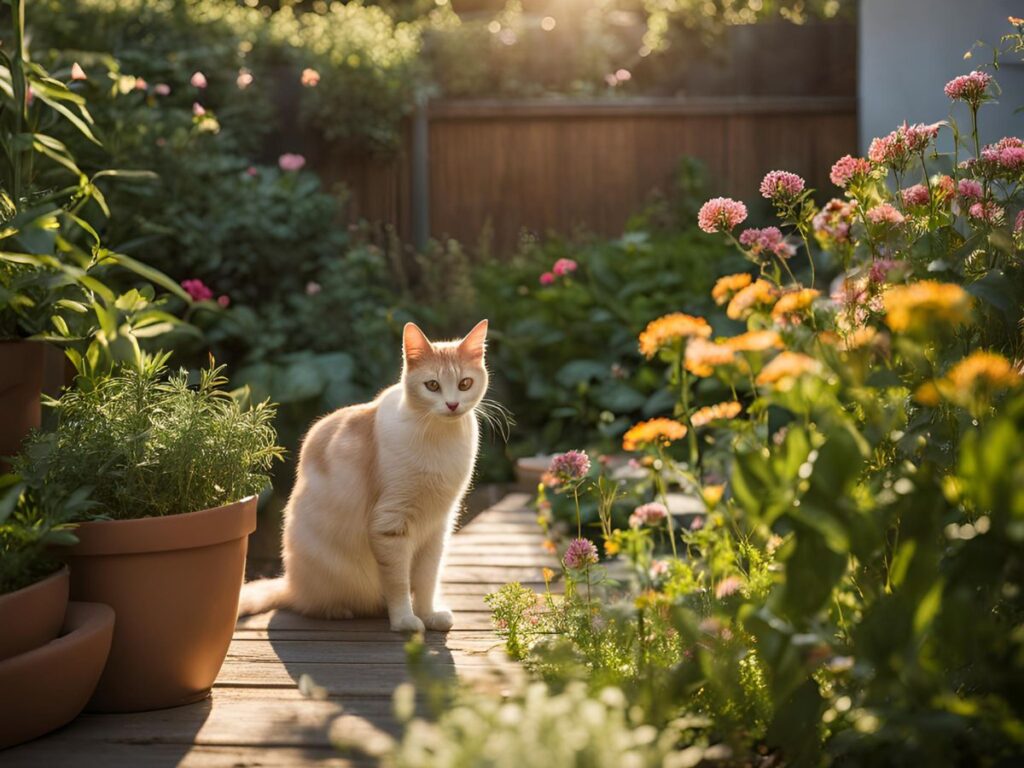
1. Positive Reinforcement
Positive reinforcement involves rewarding desirable behavior to encourage cats to stay away from your garden. How to keep cats out of garden beds This method works best when the cats are your own, as you can directly influence their behavior through incentives.
- Incentivize Behavior: To train your cat to avoid your garden, use treats, praise, or affection as rewards for staying away from the designated “no-go” areas. For example, when your cat approaches the garden, redirect it with a gentle command like “no” or “stay” and reward it with a treat when it moves away. Over time, the cat will associate the garden with a lack of rewards and the areas where it receives attention or treats as more attractive spaces.
- Consistency: Just like with any animal training, consistency is key. It’s essential to regularly reinforce the behavior you want to see. Follow your verbal cues and rewards every time the cat ventures near the garden. Over time, the cat will start to understand the boundaries you’ve set. Without consistency, the cat may become confused and return to the garden despite the training.
2. Negative Reinforcement
Negative reinforcement creates uncomfortable but harmless experiences that discourage cats from repeating unwanted behavior. This method helps to establish boundaries by associating adverse outcomes with specific actions.
- Unpleasant but Harmless Experiences: One technique The best way to keep cats out of your garden is to make an environment that makes it uncomfortable for them to dig or explore. Plastic forks placed in the soil, with the prongs facing up, are a simple but effective solution. The sharp prongs deter cats from digging or walking on the soil because it feels uncomfortable. Similarly, placing other items that create a tactile discomfort, like pinecones or bumpy mats, can discourage cats from entering certain areas. These methods don’t harm the cats but make the garden less appealing.
- Behavioral Redirection: Instead of simply punishing the cats for entering the garden, redirecting their energy to an area where they can safely play is often more practical. Create a designated outdoor play zone with engaging toys or cat-friendly features, such as scratching posts, tunnels, or catnip plants. Whenever the cat shows interest in your garden, gently guide them to the designated play area and reward them when they engage with the new space. This keeps the cat away from the garden and provides them with a positive outlet for their instincts, like scratching or exploring. how to ripen tomatoes indoors
By combining positive and negative reinforcement methods, what keeps cats out of flower beds you can train your cat to avoid the garden while promoting safe and healthy behaviors. Whether using treats to reward good behavior or making the garden less inviting through minor discomfort, consistent training helps maintain boundaries and ensures your garden remains undisturbed.
Conclusion
keeping cats from turning your garden into their playground requires a combination of strategies that address both their instincts and your desire to protect your outdoor space. We’ve discussed various methods, including using cat repellents, creating physical barriers, employing behavioral deterrents, and training cats to respect garden boundaries. Whether you opt for motion-activated sprinklers, noisy deterrents, or simply redirecting their play to a designated zone, consistency and patience are essential for success.
Now that you’re armed with these practical and humane approaches, it’s time to implement them in your garden. Start applying the solutions that best suit your needs, and don’t forget to experiment with different combinations to find what works for you. We’d love to hear about your experiences and any additional tips you have for keeping cats away. Share them in the comments section below!
While it can be challenging to keep cats out of your garden, the effort is well worth it when you see your plants thriving and your garden free of feline disruptions. Stay persistent, and enjoy a peaceful, cat-free outdoor sanctuary!
FAQs:
1. Why are cats attracted to my garden?
Cats are naturally drawn to gardens because they offer soft soil for digging, a variety of plants with appealing scents, and secluded spots to hide or explore. These areas mimic their instincts to scratch, mark territory, and search for food or shelter.
2. What are the most effective cat repellents for gardens?
Effective cat repellents include sprays, granules, and ultrasonic devices. Natural options like citrus peels, lavender, and peppermint oil can also deter cats. Chemical repellents may be more potent but should be used with caution around pets and children.
3. How do motion-activated sprinklers work to keep cats away?
Motion-activated sprinklers detect movement in the garden and trigger a burst of water when a cat enters the area. The sudden spray startles the cat and teaches them to avoid the space. This method is humane and effective for keeping cats out without causing harm.
4. Can I train my own cat to stay out of my garden?
Yes, you can train your cat to stay out of the garden using positive reinforcement, such as rewarding them when they avoid the area, and negative reinforcement, such as making the garden uncomfortable with things like plastic forks or bumpy mats. Reinforcing the desired behavior requires consistency.

